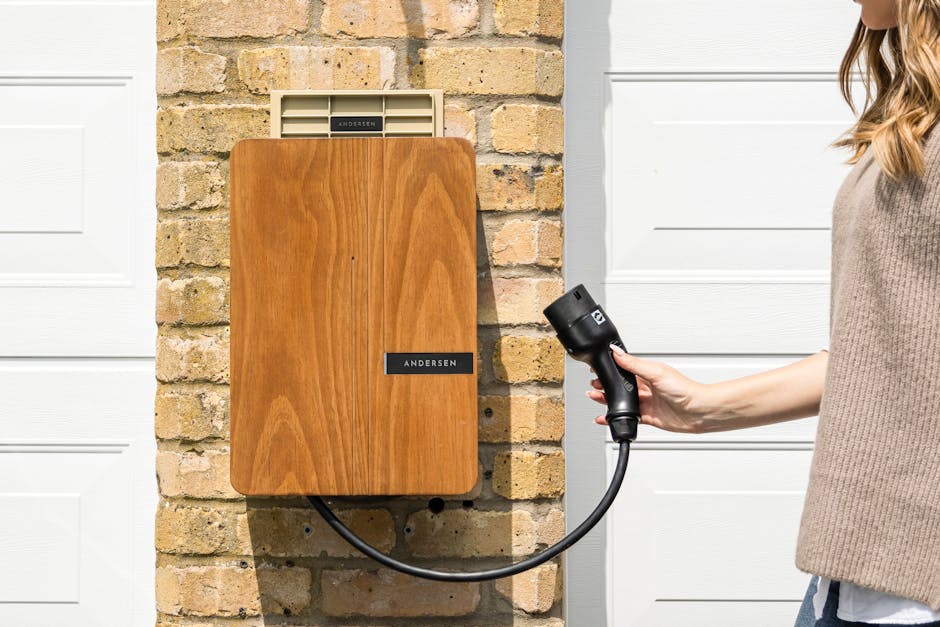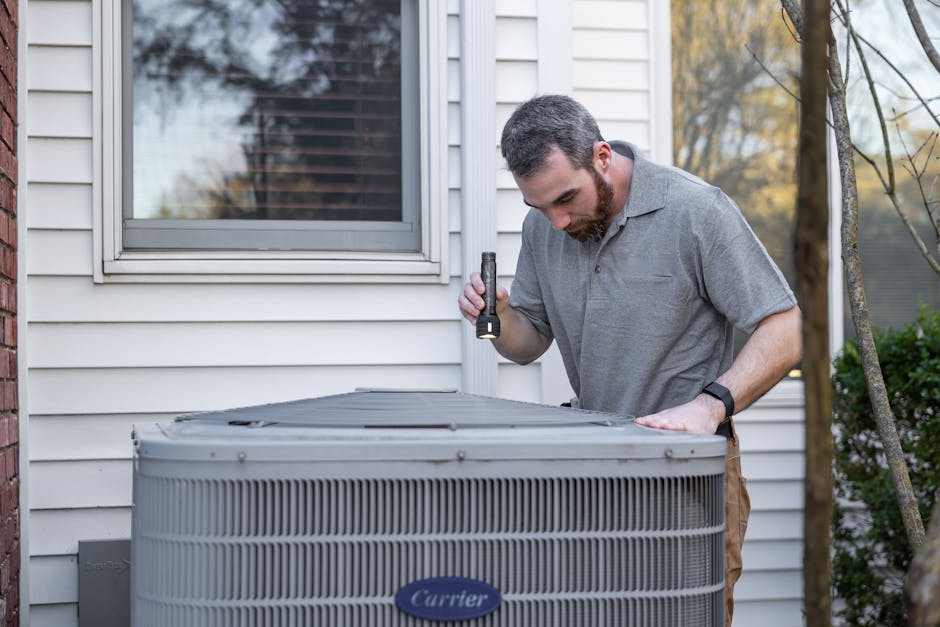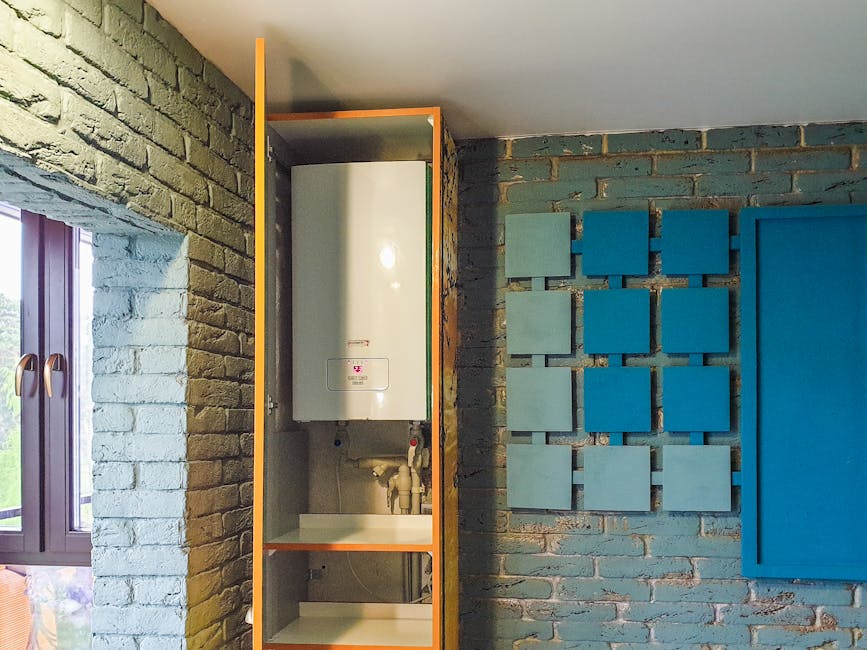More Than Just a Feeling
Humidity control is the process of managing moisture levels in your home's air to maintain optimal comfort, health, and protection for your property. Here's what you need to know:
Key Benefits of Proper Humidity Control:
- Health: Reduces allergies, respiratory issues, and dry skin
- Comfort: Eliminates static electricity and muggy conditions
- Protection: Prevents mold growth and wood damage
- Efficiency: Helps your HVAC system work more effectively
Ideal Indoor Humidity Range: 30-50%
- Below 30%: Too dry (causes static, cracked wood, dry skin)
- Above 50%: Too humid (promotes mold, dust mites, structural damage)
When most people think about humidity, their minds go to the weather forecast. But indoor humidity affects your daily comfort far more than what's happening outside.
Your home's moisture levels impact everything from how well you sleep to whether mold grows in your walls. Too little humidity leaves you with dry skin and static shocks. Too much creates the perfect breeding ground for allergens and can damage your furniture.
The good news? Modern humidity control systems integrate seamlessly with your existing HVAC setup. They automatically maintain that sweet spot between 30-50% relative humidity year-round.
I'm Mike Townsend, and my experience managing precision cooling systems for heat-seeking missile heads in the U.S. Army taught me that humidity control requires the same attention to detail - whether protecting military equipment or keeping your family comfortable. That technical background now guides how our team approaches every home's unique climate needs.
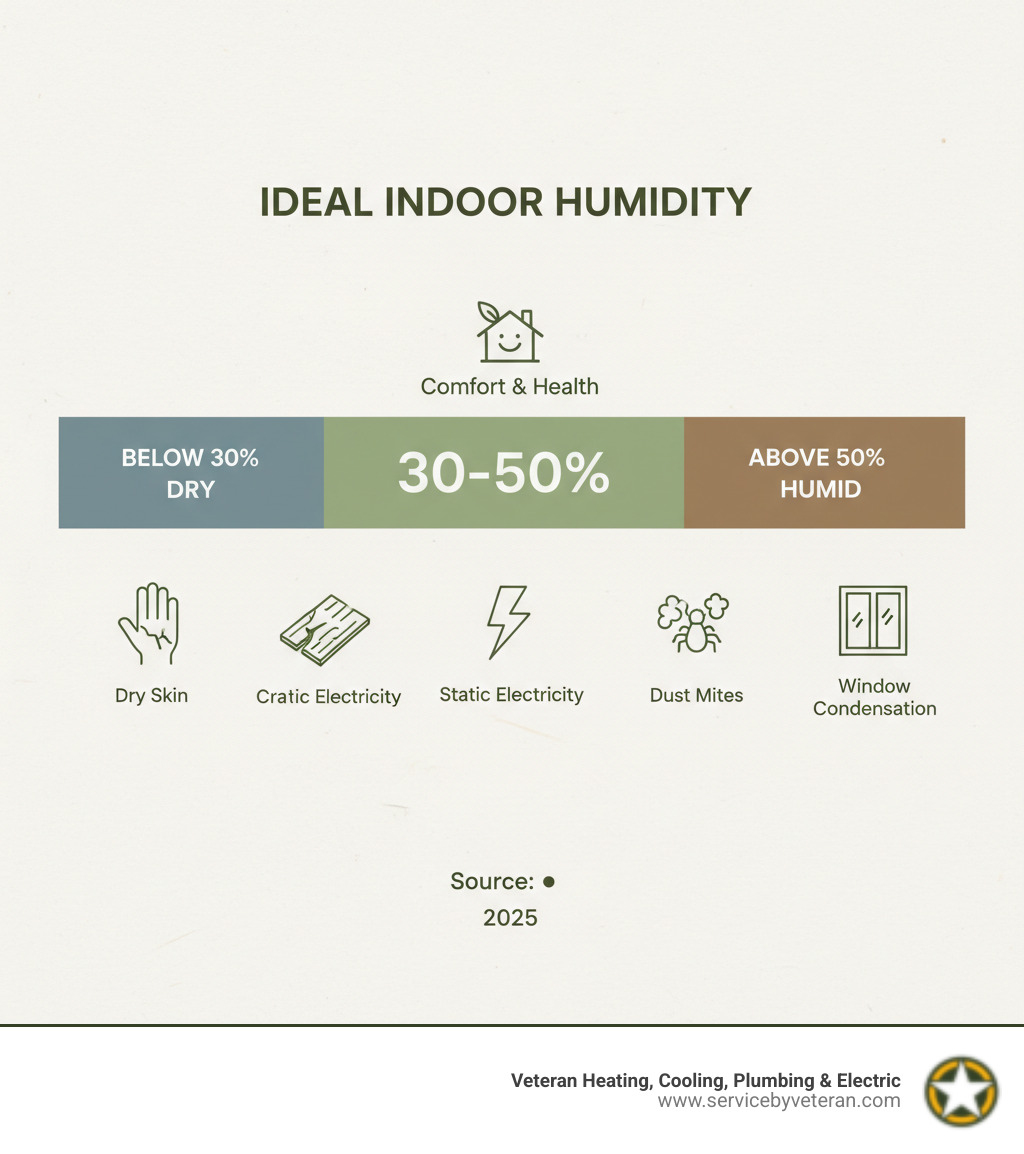
The Importance of Proper Home Humidity Control
Think of your home as a living, breathing space. Just like you need the right balance of air and moisture to feel your best, your home needs that same balance to protect your family and belongings.
The sweet spot for indoor humidity is 30-50%. This isn't just a random number – it's the range where your body feels comfortable, mold can't thrive, and your wooden furniture stays happy.
But here's the thing: your home's humidity is constantly changing. Winter weather can turn your living room into a desert, especially here in Colorado where the air gets bone dry. Summer brings its own challenges with muggy conditions that make everything feel sticky.
Even your daily routine affects moisture levels. That hot shower in the morning? It pumps water vapor into the air. Cooking dinner, doing laundry, even breathing – all of these activities add moisture to your indoor environment.
The Dangers of High Humidity
When humidity climbs above 50%, your home becomes a playground for problems you definitely don't want as roommates.
Mold and mildew love excess moisture. They'll set up shop in your bathroom corners, basement walls, and anywhere else they can find a damp spot. These unwelcome guests don't just look and smell awful – they release spores that can trigger allergies and respiratory issues. The EPA's Brief Guide to Mold, Moisture, and Your Home explains just how serious unchecked moisture problems can become.
High humidity also rolls out the red carpet for pests. Dust mites and cockroaches thrive in damp conditions, turning your comfortable home into their favorite hangout spot.
Your house itself suffers too. Paint starts peeling, wallpaper bubbles up, and wooden floors can warp. Over time, excessive moisture can even compromise your home's structural integrity. Plus, that muggy feeling forces your air conditioner to work overtime, driving up your energy bills.
The Dangers of Low Humidity
When humidity drops below 30%, your home turns into an uncomfortable desert. Your skin gets dry and itchy, your lips chap, and your nasal passages feel like sandpaper.
Low humidity can make respiratory conditions like asthma worse and leave you more vulnerable to colds and infections. Your body's natural defenses – those protective mucous membranes in your airways – can't do their job properly when the air is too dry.
Static electricity becomes your annoying companion, zapping you every time you touch a doorknob or hug someone. Your wooden furniture, floors, and musical instruments start cracking and splitting as they lose their natural moisture. Even your walls might develop cracks as drywall and plaster dry out.
The Health Benefits of Balanced Humidity
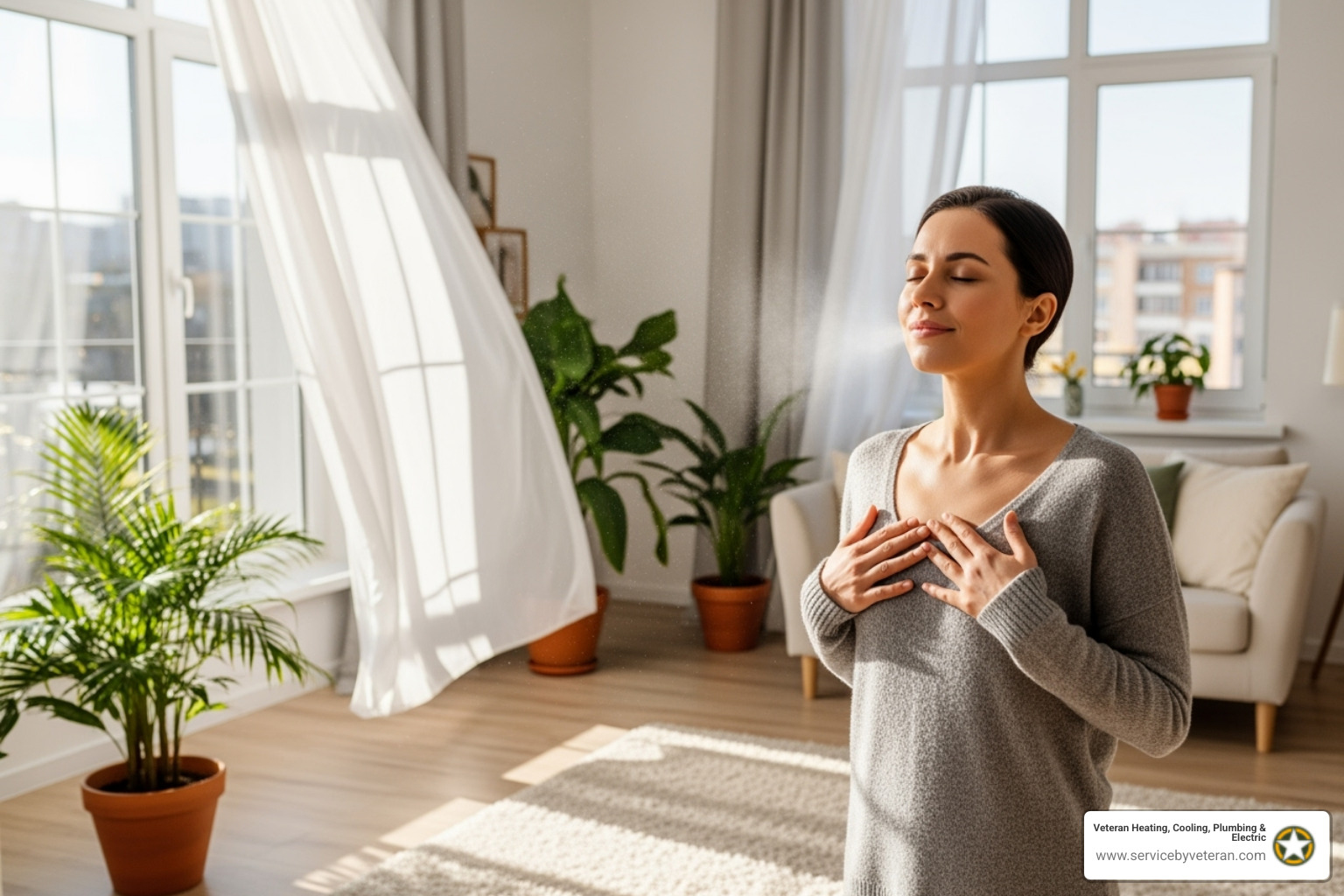
Here's where humidity control really shines. When you maintain that 30-50% range, amazing things happen for your health.
Your allergy symptoms calm down because mold, mildew, and dust mites can't multiply in properly balanced air. You'll breathe easier with less congestion and fewer sneezing fits.
You'll get sick less often too. When your mucous membranes stay properly moist, they can trap and kick out viruses and bacteria before they make you sick. No more waking up with a scratchy throat or stuffy nose.
Sleep becomes more restful when the air around you feels just right. Your family will wake up feeling refreshed instead of dealing with dry throats and irritated sinuses. Even your skin and eyes feel better – no more flaky patches or that gritty feeling.
Protecting Your Home and Belongings
Your home represents one of your biggest investments, and proper humidity control acts like an invisible shield protecting everything inside.
Wood is especially sensitive to moisture changes. Your hardwood floors, kitchen cabinets, and dining room table all expand and contract based on humidity levels. Keep the balance right, and they'll stay beautiful for decades. Let humidity swing wildly, and you'll see warping, cracking, and costly damage.
Musical instruments are even pickier about humidity. That piano or guitar can go out of tune or suffer permanent damage when moisture levels fluctuate too much.
Electronics last longer in properly controlled environments too. Excessive moisture can cause corrosion and short-circuits in your expensive devices. Even your paint job benefits – balanced humidity prevents that annoying bubbling and peeling that forces you into unexpected redecorating projects.
At Veteran Heating, Cooling, Plumbing & Electric, we've seen how the right humidity control system transforms homes from uncomfortable to perfect. Our comprehensive solutions help protect both your family's health and your property investment. Check out Our Services to see how we can help create the ideal environment in your home.
How Humidity Systems Work with Your HVAC
Picture this: instead of having multiple gadgets humming away in different rooms, your humidity control works quietly behind the scenes through your existing heating and cooling system. That's the magic of whole-house humidity systems – they team up with your HVAC to treat all the air flowing through your home's ducts.
This partnership means every room gets the same comfortable moisture levels, whether you're in your basement workshop or upstairs bedroom. No more dry air in one room and muggy conditions in another. Your thermostat becomes mission control for both temperature and humidity, giving you complete climate control from one spot.
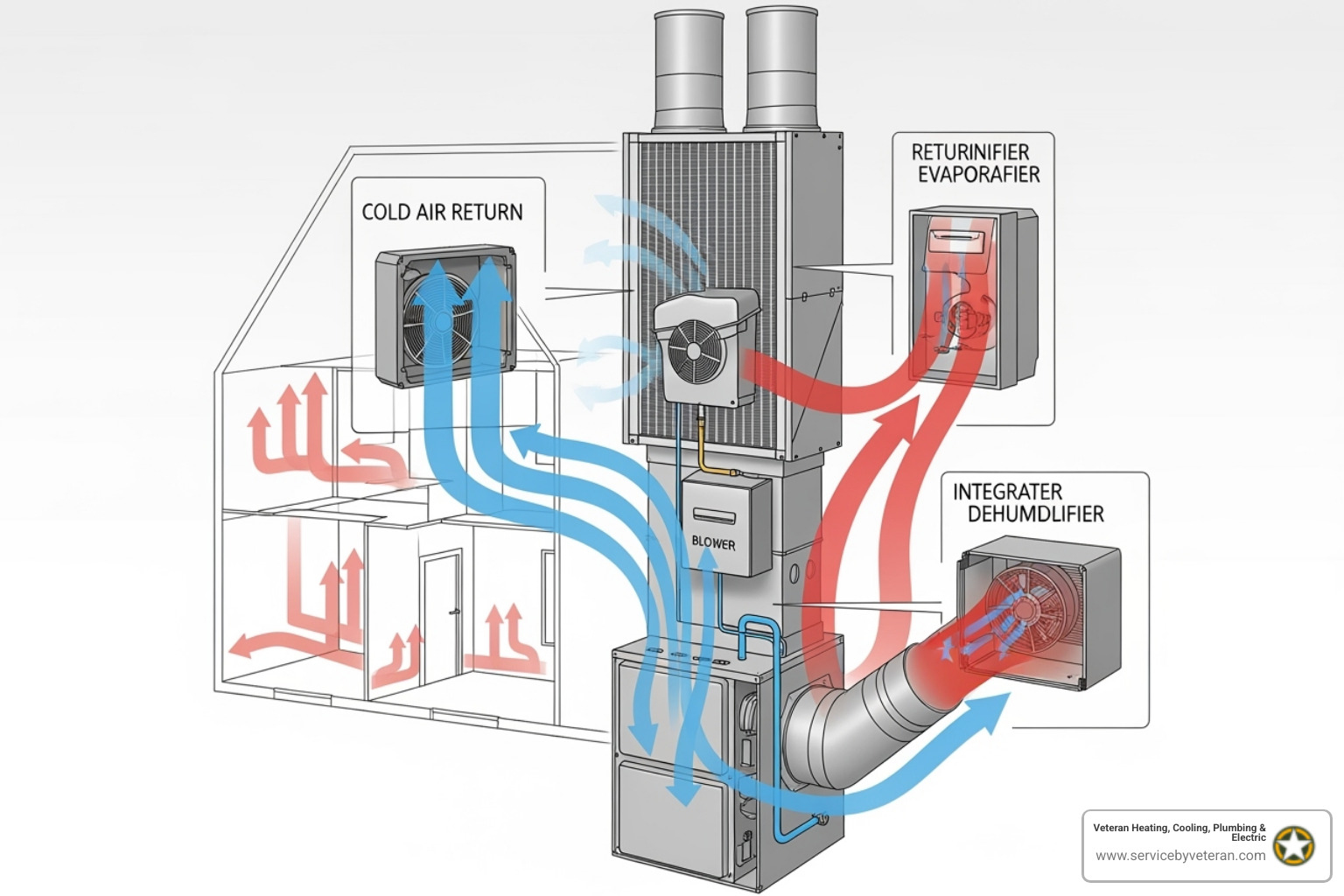
The beauty of this setup is how efficiently it works. Your existing ductwork becomes a highway for perfectly conditioned air. As your furnace or air conditioner moves air through your home, the humidity system adjusts moisture levels along the way.
How Dehumidifiers Remove Moisture
When Colorado's summer humidity makes your home feel like a swamp, your whole-house dehumidifier jumps into action. Think of it as your home's moisture bouncer – it knows exactly when things get too sticky.
The process starts when sensors detect rising humidity above your comfort zone. The system pulls that muggy air into cooling coils that are cold enough to make the moisture condense into water droplets. It's the same thing that happens when you pour a cold drink on a hot day and water beads form on the glass.
All that collected water gets drained away through your home's plumbing or a dedicated drain line. Meanwhile, the now-dry air gets warmed back up to the right temperature and sent through your ducts to every corner of your home.
This condensation process happens continuously, keeping humidity levels steady without you having to think about it. No more wiping condensation off windows or worrying about mold growing in damp corners.
How Humidifiers Add Moisture
Winter in Colorado can turn your home into a desert, leaving you with cracked lips and static shocks every time you touch a doorknob. That's when your whole-house humidifier becomes your best friend.
A humidistat monitors your home's moisture levels constantly. When humidity drops below your preferred setting, it signals the humidifier to start adding moisture to the air stream.
Evaporative humidifiers work by pushing air through water-soaked pads, letting natural evaporation add moisture. Steam humidifiers take a more direct approach – they actually boil water to create steam that gets mixed into your home's air. For homes with furnaces, bypass systems redirect some heated air over a water panel before sending it back into the main airflow.
The moisturized air then travels through your existing ductwork, reaching every room in your home. No more dry throats at night or furniture cracking from lack of moisture.
If you're dealing with furnace issues that might affect your humidity system, our Lakewood team can help get everything working smoothly again. Check out our Furnace Repair Lakewood services to keep your comfort systems running perfectly together.
Your Toolkit for Managing Indoor Humidity
Think of managing your home's humidity like cooking a perfect meal – you need the right tools and a clear understanding of what you're working with. Whether you're dealing with a stuffy basement in your Littleton home or dry winter air in Westminster, having the proper equipment makes all the difference.
Measuring and Monitoring Humidity
You can't fix what you can't measure. Before diving into humidity control solutions, you need to know exactly what's happening with your indoor air quality.
Hygrometers are your first line of defense. These simple devices measure relative humidity and are surprisingly affordable. You can pick up a basic digital hygrometer for under $20 and place it in different rooms to get accurate readings. Many modern thermostats also include built-in hygrometers, giving you humidity data right alongside your temperature settings.
For tech-savvy homeowners, smart sensors take monitoring to the next level. These Wi-Fi-enabled devices connect directly to your smartphone, sending real-time humidity data wherever you are. Imagine getting an alert while you're at work that humidity levels in your Boulder home are creeping too high – you can take action before mold becomes a problem.
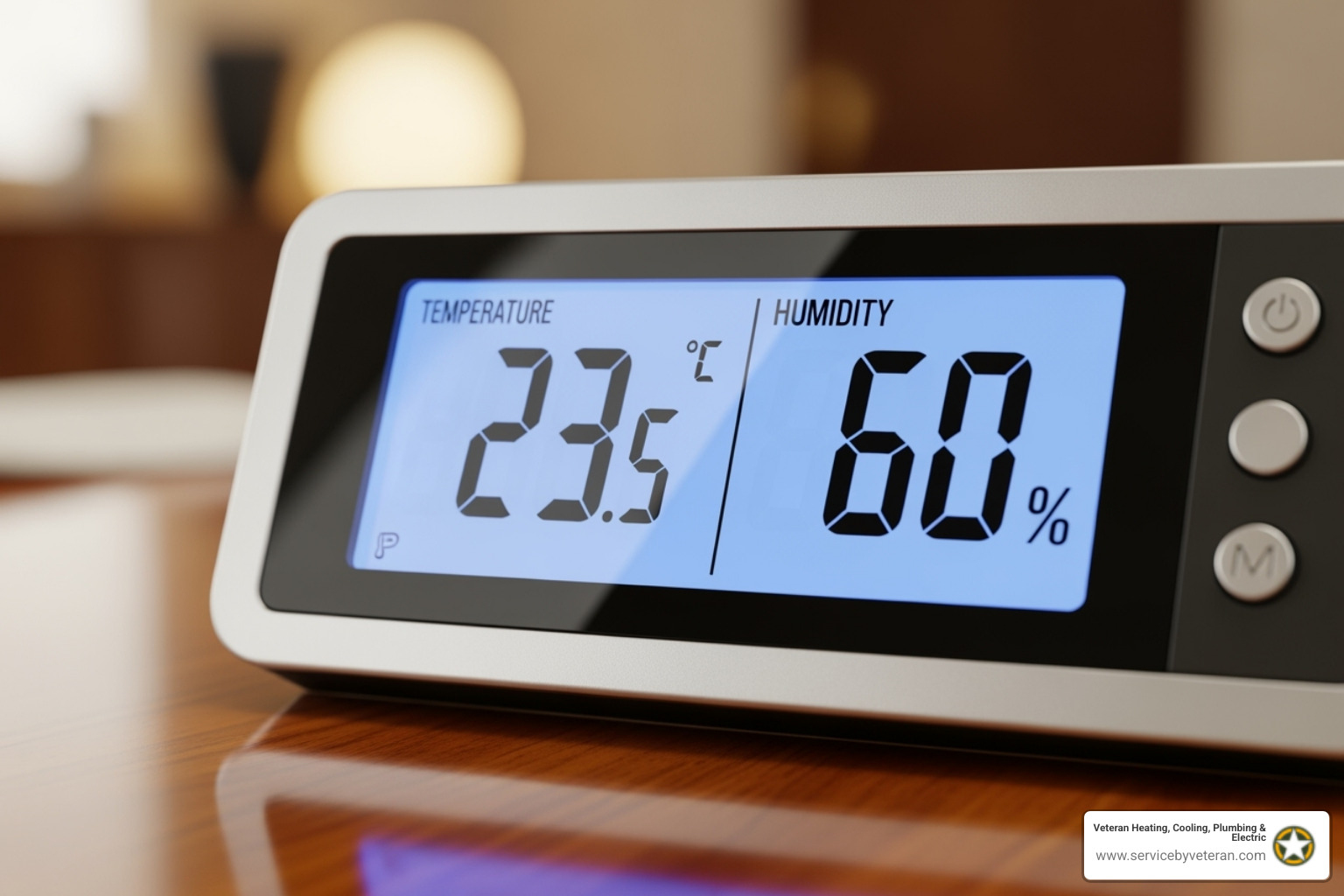
App integration makes tracking your home's climate patterns effortless. Many smart sensors come with dedicated apps that don't just show current readings – they provide historical data too. You'll start noticing patterns, like how your humidity spikes after long showers or drops dramatically when the furnace kicks on during cold snaps.
Some systems even integrate with smart home platforms, automatically adjusting your HVAC system when humidity levels drift outside your comfort zone. It's like having a personal climate assistant working around the clock.
Choosing the Right System for Your Home's Humidity Control
Once you understand your home's humidity patterns, it's time to choose the right equipment. The decision usually comes down to portable units versus whole-house systems, and each has its place.
Portable dehumidifiers excel at tackling specific problem areas. That damp basement in your Castle Rock home or the perpetually humid bathroom upstairs? A portable unit can handle these targeted issues beautifully. They collect moisture in a reservoir that you'll need to empty regularly – think of it as proof that the system is working hard for you.
Portable humidifiers work similarly but in reverse, adding moisture to individual rooms. They're perfect for bedrooms during dry winter months, helping you wake up without that scratchy throat feeling. The downside? You'll be refilling water tanks more often than you'd like.
Whole-house humidifiers integrate seamlessly with your existing HVAC system, adding moisture to air as it circulates throughout your entire home. No more running around refilling tanks or dealing with inconsistent humidity from room to room. They're incredibly efficient and require much less hands-on maintenance than portable units.
Whole-house dehumidifiers offer the same comprehensive approach for removing excess moisture. These systems work with your HVAC to treat all the air passing through your ductwork. For homes in humid-prone areas like Wheat Ridge or Erie, they provide consistent humidity control without the hassle of emptying water reservoirs every few days.
The best choice depends on your specific situation. If you're dealing with isolated humidity issues, portable units might be perfect. But for comprehensive comfort throughout your Highlands Ranch or Commerce City home, whole-house systems typically deliver better results with less ongoing effort.
Maintenance and Professional Solutions
Think of your humidity control system like your car – regular maintenance keeps it running smoothly for years to come. Without proper care, even the best humidity control equipment can become ineffective or, worse, become a breeding ground for the very problems it's supposed to prevent.
The good news? Most maintenance tasks are surprisingly simple and take just a few minutes of your time.
DIY Maintenance for Your Devices
Your humidity system works hard year-round, so showing it a little love goes a long way. The most important task is cleaning reservoirs regularly. For portable units, empty and wash the water tank weekly with mild soap – think of it like washing dishes. Mold and bacteria love stagnant water, so keeping things fresh is crucial.
Filter replacement might be the most overlooked maintenance task, but it's also one of the most important. Humidifier filters and water panels collect mineral deposits over time, while dehumidifier filters trap dust and debris. Most filters need changing every 3-6 months, though whole-house systems typically need annual replacement. One homeowner we know admitted they skipped changing their humidifier filter for a couple years – and definitely doesn't recommend it!
For whole-house systems, checking water pads annually ensures your system runs efficiently. These components are usually housed in a box-like unit attached to your ductwork and can accumulate mineral buildup that reduces effectiveness.
Even with diligent DIY care, an annual professional inspection gives you peace of mind. Our Maintenance Plans include comprehensive checks to catch small issues before they become big problems.
When to Call a Professional for Humidity Control
While portable units and basic maintenance handle many situations, some problems need professional expertise. Persistent musty odors that won't go away despite cleaning often signal hidden moisture issues that require detective work and specialized solutions.
Visible mold growth is always a red flag. Small spots might be manageable, but significant patches – especially in basements or attics – need professional assessment and remediation along with proper humidity control to prevent recurrence.
Watch your windows too. While some condensation on cold days is normal, if water regularly runs down your window panes, your indoor humidity is too high for your current setup to handle.
Sometimes your portable units just can't keep up. If you're running dehumidifiers constantly but still feeling sticky, or humidifiers non-stop but still getting shocked by static electricity, it's time to consider a whole-house system installation. These installations require specialized knowledge to properly size, install, and integrate with your existing HVAC system.
At Veteran Heating, Cooling, Plumbing & Electric, we handle everything from diagnosing tricky humidity problems to installing comprehensive whole-house solutions. For more tips on maintaining comfortable indoor air, visit our Blog.
Frequently Asked Questions about Home Humidity
Over the years, we've heard just about every humidity question you can imagine from homeowners across Denver, Arvada, and all our service areas. Let me share the answers to the ones that come up most often during our service calls.
What is the best humidity level for a house in winter?
Winter humidity control can be tricky because you're balancing comfort with physics. While our ideal range of 30-50% still applies, you'll want to aim for the lower end during those bitter Colorado cold snaps—around 30-40% when it's really frigid outside.
Here's why: when outdoor temperatures plummet, your windows and walls get incredibly cold. If your indoor humidity is too high, that moisture will condense right on those cold surfaces. I've seen homeowners deal with ice buildup on windows, water damage around frames, and even mold growth from this condensation.
The Association for Home Appliance Manufacturers actually provides specific guidelines that get more restrictive as temperatures drop. At 0°F outside, they recommend keeping indoor humidity around 25%. If it hits -20°F (yes, it happens here in Colorado!), you'd want to drop it to about 15%.
It might feel a bit dry, but it's better than dealing with frozen windows and water damage come spring.
Can running a dehumidifier help with allergies?
Absolutely! This is one of my favorite questions because the answer is such good news for allergy sufferers.
When you keep humidity below 50%, you're essentially creating an environment where dust mites, mold, and mildew can't thrive. These microscopic troublemakers love moisture—it's like their favorite vacation spot. But take away that excess humidity, and their populations crash.
I've had customers tell me they noticed fewer sneezing fits and clearer breathing within just a few weeks of installing proper humidity control. It's especially helpful for folks with asthma, since reducing these allergens means less respiratory irritation overall.
The best part? It's a natural solution that works 24/7 without any medications or chemicals.
Does my air conditioner control humidity?
Your air conditioner does remove some moisture—it's actually a happy side effect of the cooling process. As your AC chills the air, moisture condenses on those cold coils inside the unit and gets drained away, just like water droplets forming on a cold drink.
But here's the thing: your AC isn't designed to be a dehumidifier. Its main job is keeping you cool, not managing moisture levels.
This becomes really obvious on those muggy spring or fall days when it's not quite hot enough for your AC to kick on, but the humidity is making everything feel sticky and uncomfortable. Your air conditioner is just sitting there doing nothing while you're dealing with that oppressive, humid feeling.
In very humid climates, or during those in-between seasons, you'll likely need a dedicated dehumidifier for proper humidity control. It can focus solely on pulling moisture out of the air without over-cooling your home or running up your energy bills.
Conclusion: Achieve Perfect Balance in Your Home
When you walk into your home after a long day, you should feel that immediate sense of comfort and relief. That feeling isn't just about temperature—it's about having the humidity control that makes your space truly welcoming. Throughout this guide, we've explored how maintaining that sweet spot between 30-50% relative humidity transforms your home from simply livable to genuinely comfortable.
Think about everything we've covered: the health benefits that keep your family breathing easier, sleeping better, and suffering fewer allergy symptoms. The protection that prevents your hardwood floors from warping, your furniture from cracking, and mold from taking hold in hidden corners. The seamless integration with your HVAC system that makes whole-house solutions so effective.
Modern humidity systems aren't just about fixing problems—they're about creating the kind of environment where you and your family can thrive year-round. Whether it's preventing those annoying static shocks in winter or eliminating that sticky, muggy feeling in summer, proper humidity control works quietly in the background to improve your daily life.
For residents throughout our Colorado service areas—from Lakewood and Westminster to Aurora and Castle Rock—achieving optimal indoor air quality means partnering with professionals who understand both the technical challenges and the personal importance of home comfort. At Veteran Heating, Cooling, Plumbing & Electric, we bring the same precision and attention to detail that served us in the military to every home we enter.
Our veteran-led team stands behind every installation with a lifetime warranty on parts and labor, plus our money-back guarantee. We're not just another service company—we're your neighbors, committed to delivering honest, community-focused solutions that truly make a difference in how you experience your home.
Ready to find what perfectly balanced humidity feels like? We're here to help you achieve that ideal comfort level and protect everything that matters most to you. Visit our Service to Heroes page to learn more about our commitment to serving those who've served our community.
Explore our comprehensive indoor air quality solutions and take the first step toward the comfortable, healthy home you deserve.

